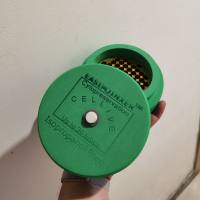The Intracranial Self-Stimulation Procedure Provides Quantitative Measures of Brain Reward Function
互联网
互联网
相关产品推荐

EASIMJINXER CryoKing 30-Well Cryoboxes, -1℃(-33.8℉) Cell Freezing Container, EVA Freezer Boxes, Laboratory Procedure Cooling Box for 1.2ml or 2.0ml Vials, 1 Pcs Freezing Containers
¥598

Recombinant-Mouse-Killer-cell-lectin-like-receptor-subfamily-G-member-1Klrg1Killer cell lectin-like receptor subfamily G member 1 Alternative name(s): Mast cell function-associated antigen 2F1
¥10458

N8152512珀金埃尔默进样针0.25 mm ID Self-aspirating Probe 80 cm PerkinElmer
¥11264

PROCEDURE DISTRIBUTOR, PHARMSPEC LIC
¥11165

赛默飞世尔Thermo Fisher LAR PROCEDURE 货号:T_70113-451-155
¥25000

